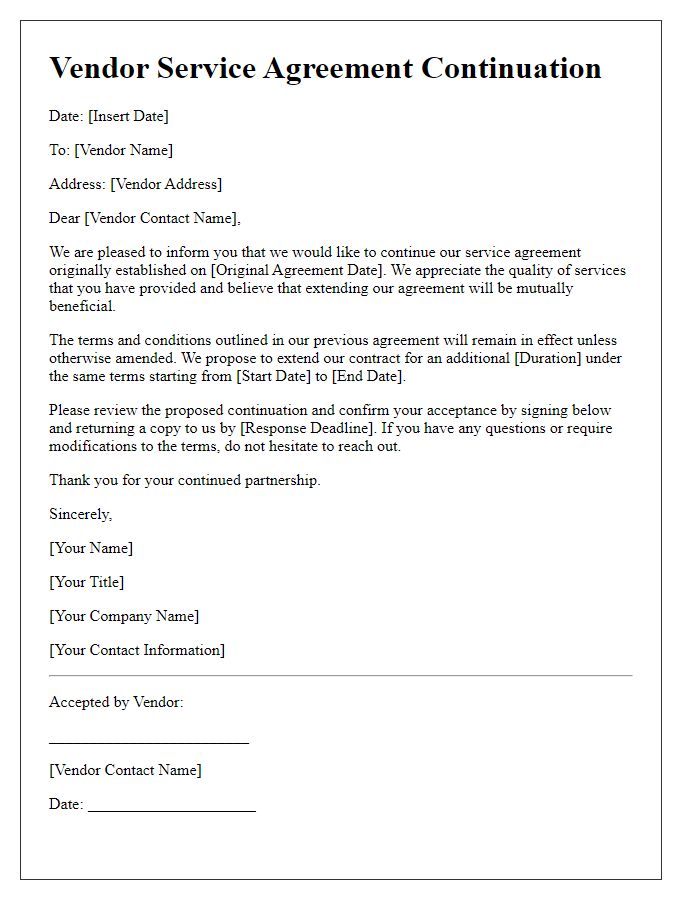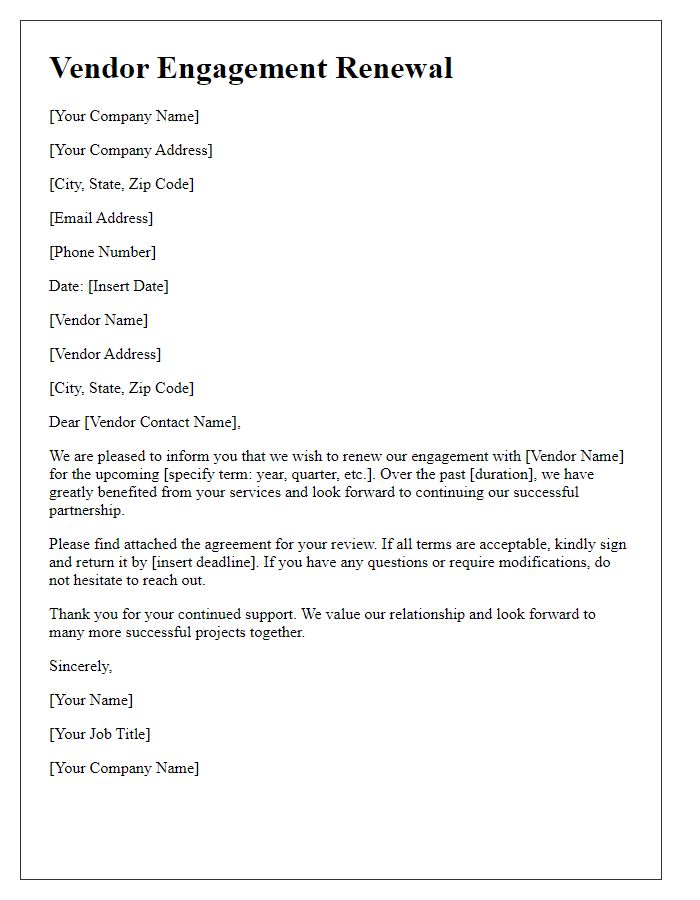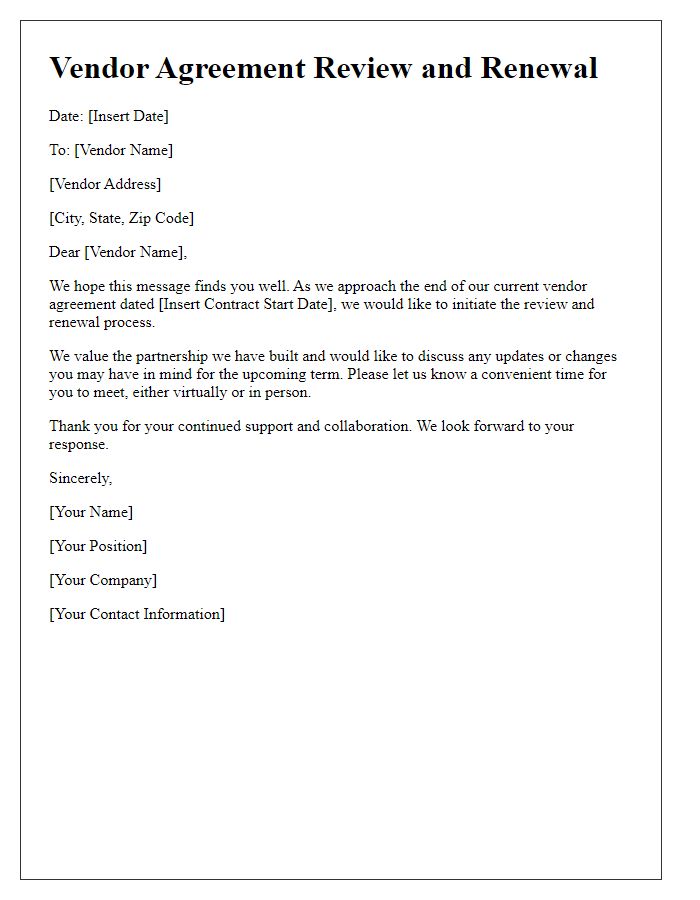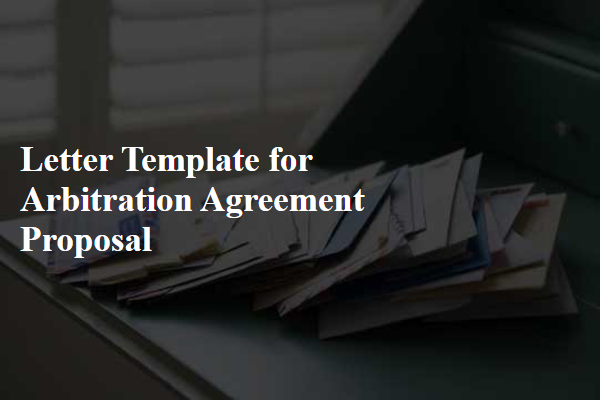Renewing a vendor agreement is a pivotal step for maintaining smooth business operations and fostering positive relationships with your suppliers. It's crucial to approach this process with clarity and a sense of collaboration, ensuring that all parties feel valued and understood. From negotiating terms to discussing expectations, every detail counts in setting the stage for a successful partnership. Join us as we explore effective strategies for crafting the perfect letter template to renew your vendor agreements!

Clear Identification of Parties
In a vendor agreement renewal, establishing a clear identification of parties is crucial. The primary parties involved typically include the vendor (company ABC, headquartered in New York City) and the client (company XYZ, based in Los Angeles). Each party should provide official legal names, addresses, and contact information, ensuring clarity in identity. Furthermore, inclusion of designations such as "Authorized Representative" can enhance accountability. A designated contact at company ABC might be the Chief Operations Officer, while company XYZ could identify its Head of Procurement. Clear identification not only establishes responsibility but also facilitates effective communication throughout the duration of the agreement.
Detailed Terms and Conditions
Vendor agreement renewals often involve detailed terms and conditions that outline the responsibilities and expectations of both parties. A well-defined agreement includes sections on deliverables, payment terms, and timelines, ensuring clarity on pricing structures, such as discounts or penalties for late payments. Additionally, performance metrics may be established to gauge vendor compliance with quality standards, frequency of service or product delivery, and customer service expectations. Confidentiality clauses protect proprietary information, while termination conditions outline the process for ending the agreement, including notice periods and the responsibilities that remain post-termination. Legal jurisdictions and dispute resolution mechanisms are also essential, determining how conflicts will be managed, often specifying mediation or arbitration procedures. By incorporating these elements, both parties can foster a productive business relationship based on mutual understanding and respect for each other's operational needs.
Updated Pricing and Payment Terms
The renewal of vendor agreements often involves revisions of pricing and payment terms. Updated pricing may reflect market fluctuations or changes in material costs, requiring adjustments to maintain mutual benefit. Payment terms (like net 30 or net 60 days) outline the timeline for settling invoices, ensuring clarity in financial transactions. These changes ensure both parties are aligned on expectations, fostering a lasting partnership. Regular reviews of agreements can enhance vendor relationships and adapt to evolving business needs.
Duration and Termination Clauses
The duration of the vendor agreement is set for a term of one year, commencing on January 1, 2024, and concluding on December 31, 2024. The agreement may be renewed upon mutual consent, with written notice delivered at least 30 days prior to the expiration date. Termination of the agreement can occur by either party provided that a written notice of termination is received at least 60 days before the intended termination date. Grounds for immediate termination include breach of contract, failure to comply with industry standards, or unethical business practices. Both parties reserve the right to renegotiate terms and conditions prior to renewal to ensure alignment with evolving business goals.
Contact Information and Signatories
A vendor agreement renewal requires detailed documentation that ensures all parties understand the terms of the renewed contract. Essential contact information includes the vendor's name, business address, phone number, and email, along with the client's primary contact, which may consist of a designated representative's name, title, and contact details. Signatories should include authorized individuals from both parties, often company executives or legal representatives, whose signatures validate the agreement legally. Dates for the renewal, renewal period, and any specific terms detailing changes from the original agreement should also be clearly listed to avoid ambiguity. Such thorough documentation guarantees accountability and helps facilitate smooth collaborations going forward.













Comments